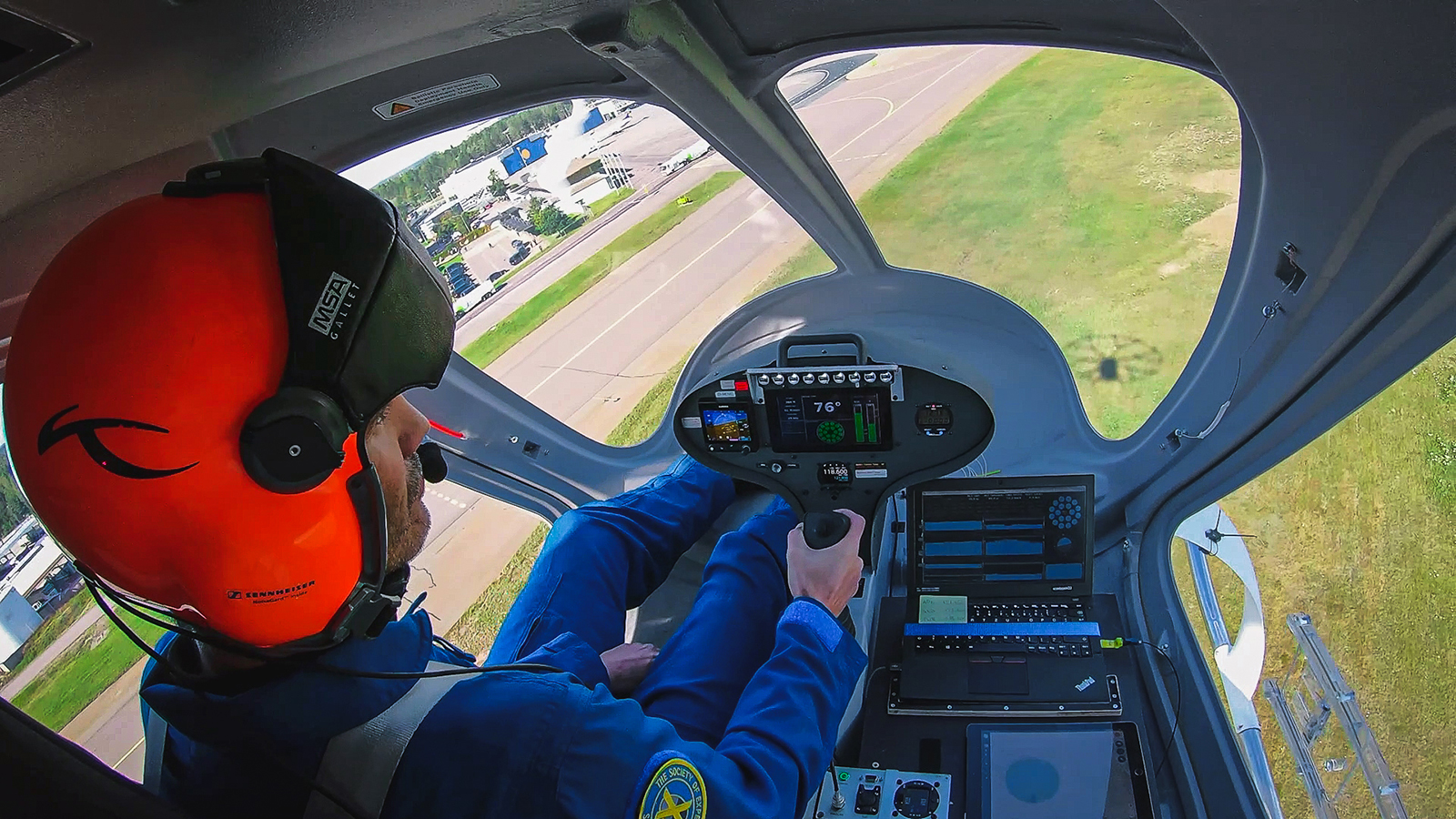Stay Up to Date
Submit your email address to receive the latest industry and Aerospace America news.
Demand for pilots comes at a challenging moment in the air transport industry
Joby Aviation and Volocopter, two of the leading advanced air mobility developers, have radically divergent strategies for how to train and recruit the hundreds or thousands of pilots they’ll need to begin their air taxi services in just a few years.
California-based Joby is developing a training academy through which it plans to certify commercial pilots under FAA requirements. Germany-based Volocopter, on the other hand, plans to seek out only licensed pilots who will then receive training specific to the company’s aircraft.
Let’s first consider Joby’s approach. When the California-based company showed off its electric, six-rotor S4 aircraft to a small audience of investors and journalists in October, the unoccupied aircraft flew under the command of a pilot in a “remote cockpit” on a nearby platform.
Joby’s operational plan, however, calls for having one pilot aboard each of its aircraft. The pilot from the October demonstration and several others are now writing and developing a curriculum for training those pilots so that Joby can become a Part 135 airline.
Joby and its competitors face the challenge of attracting pilots and efficiently educating them at a time when pilot shortages have crimped regional air service in the United States.
A pipeline of potential recruits will be essential, so to begin building interest, Joby has been teaching a single course of its eventual curriculum — a pilot ground school that is taught virtually and in person at times — to 400 employees and their family members, as it also develops its Aviation Academy, says Bonny Simi, head of air operations and people.
“We are now offering the ground school to high schools to spur interest in aviation. We’re using this as the entryway; we’re building the excitement and platform and making it free for now,” Simi says.
Joby pilots will initially be trained for about 500 hours, the FAA standard for an instrument-rated commercial pilot-in-command of a small passenger aircraft. By contrast, FAA requires about 1,500 hours to become a commercial airline pilot.
After that, Joby pilots will train specifically to fly company’s aircraft, just as any commercial pilot must do to fly a specific aircraft, Simi says.
“The goal is to streamline the specific training, so it’s weeks, not months,” she adds.
As of now, Joby hasn’t set a tuition for its academy once it opens in preparation for the planned start of passenger flights in 2025, but Simi says that students will bear some of the cost.
Joby’s current test pilots include former test pilots for the F-35 Joint Strike Fighters, she says.
“They are the ones creating the training here,” says Simi, herself a former airline pilot.
As with many commercial jetliners today, piloting the Joby aircraft will be largely automated, but pilots will be trained to intervene should problems arise. The initial training will be like current military training for powered-lift aircraft such as the V-22, she says.
Joby, unlike some other AAM companies, has decided to perform thousands of hours of test flights with remote pilots, which Simi says is the safest way to prove performance.
“The remote pilot controls are literally an exact duplicate of the cockpit, and they are flying it as if they’re in the airplane. So, what they’re seeing is what they would see if they were in the cockpit,” she says. They also have the advantage of additional camera views mounted on the exterior and, usually, on a chase plane.
The remote pilot experience will be mimicked by simulators during training, Simi says.
“It’s important to note these are single-pilot aircraft. There’s only one set of controls, so you cannot do instruction in them; initial instruction must be done in a full-motion simulator,” she says.
Joby is building out its simulators with Canadian aviation company CAE.
Meanwhile, Volocopter has a much different plan for meeting its goal to be operating in time for the Paris Summer Olympics in 2024.
Unlike Joby, Volocopter plans to seek pilots who already carry a commercial pilot license.
“We are developing a special training syllabus for Volocopter aircraft to complete on top of their Commercial Pilot License,” from the European Union Aviation Safety Agency, the company told me via email. “The training program will offer theoretical and practical training in a classroom and at home. Simulator and on-aircraft training will also take place.”
Volocopter’s aircraft are multicopters, including the two-seat VoloCity, and have a Digital Flight Control System which the company says “enables a very simple pilot control strategy” that is “easier to fly than a helicopter or a conventional aircraft.”
The company estimates the additional training will require just three to six months for certification.
“This additional training consists of both theoretical training and practical training, including several flight hours and takeoffs and landings,” Volocopter says.
Get the latest news about advanced air mobility delivered to your inbox every two weeks.
About paul brinkmann
Paul covers advanced air mobility, space launches and more for our website and the quarterly magazine. Paul joined us in 2022 and is based near Kennedy Space Center in Florida. He previously covered aerospace for United Press International and the Orlando Sentinel.
Related Posts
Stay Up to Date
Submit your email address to receive the latest industry and Aerospace America news.




